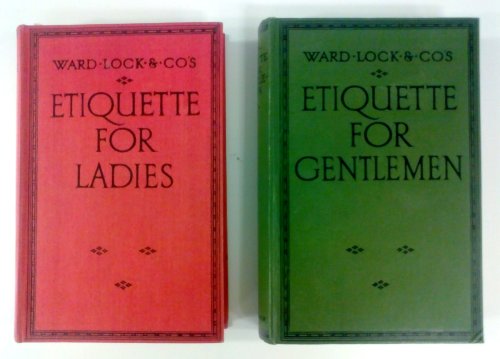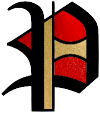 Much of the heritage of humanity which the original Knights Templar preserved and developed is knowledge from ancient history, revealing many “secrets” which are much desired by seekers worldwide, and giving practical solutions to many problems of modern society. Such inspirational topics of great public interest served to perpetuate the prestige of the Order, and facilitated the popularization of Templarism in the modern era.
Much of the heritage of humanity which the original Knights Templar preserved and developed is knowledge from ancient history, revealing many “secrets” which are much desired by seekers worldwide, and giving practical solutions to many problems of modern society. Such inspirational topics of great public interest served to perpetuate the prestige of the Order, and facilitated the popularization of Templarism in the modern era.
The original Knights Templar, however, were more than Guardians of the ancient Sacred Knowledge. The fundamental character and function of the Order itself, as documented in the historical record, equally included distinct contributions to nobility culture, serving as the very essence and embodiment of traditional values.
The authentic culture of Templar Chivalry represented the highest ideals of European nobility, and also served as a supporting tradition contributing humanitarian values to the culture of nobility.
Indeed, the first written code of chivalric rules and courtly etiquette of nobility culture was the ancient Egyptian papyrus scroll, the Instruction of Ptahhotep, dated to ca. 2,400 BC, discovered in Thebes (modern Luxor) [1] [2]. These teachings were preserved by the Ancient Priesthood which the Knights Templar recovered and restored from the Biblical Temple of Solomon, a Pharaonic Egyptian Temple, which included a library. That Egyptian tradition of courtly nobility culture traces back to the Mesopotamian “Narts” (Knights) of the “Nartmongue” (Holy Grail) of a “Round Table”, dated to ca. 10,068 BC [3] [4].
The ancient origins of chivalric rules of courtly culture were confirmed by the British Knight, Royal Councillor to Queen Elizabeth I and Adviser to King James I, Fulke Greville, 1st Baron Brooke (1554-1628 AD) – named “Fulke” as a descendant of the founding Templar Patron King Fulk of Jerusalem – who was often quoted as an expert on protocols of the British royal court:
“The very same qualities that constituted a gentleman [or lady], in the first age of the world, are… to the end of time… as God is the same, yesterday, today, and forever.” [5]
Very much like the body of ancient “lost history” which the Templar Order brings back to the modern world, the principles of Chivalry and traditional values have also been largely forgotten in the consciousness and culture of modern society, and also need to be restored.
It is the responsibility of all Templar Knights and Dames to represent the living tradition of Chivalry in their own lives and professional activities, leading by example, to promote and advance those principles and values for the benefit of world civilization.
A concise understanding of Chivalry is also essential to defining the activities of the restored Templar Order, which its Knights and Dames pursue in real-world practice. Meaningful activities reflecting the values of Chivalry are perhaps the most important and tangible characteristic of the modern Order.
 The word “Chivalry”, which comes from the Latin ‘caballarius‘ and the 11th century Old French ‘chevalerie‘ meaning “horse soldiery”, embodies a concept and philosophy much greater than its literal elements of horsemanship and knightly discipline. Since Classical Antiquity and throughout the Middle Ages, it also doubled as the word for “upper social classes”, referring to the principles of morals and ethics which nobility were obligated to represent. [6]
The word “Chivalry”, which comes from the Latin ‘caballarius‘ and the 11th century Old French ‘chevalerie‘ meaning “horse soldiery”, embodies a concept and philosophy much greater than its literal elements of horsemanship and knightly discipline. Since Classical Antiquity and throughout the Middle Ages, it also doubled as the word for “upper social classes”, referring to the principles of morals and ethics which nobility were obligated to represent. [6]
The ideals of Chivalry are also known as the “Code of Chivalry”, the iconic code of conduct which was made famous by the medieval institution of knighthood. The essence of Chivalry involved bravery, skilled training, and dedication in service to others. [7] [8]
The Code of Chivalry evolved into a highly developed “system” of social ethics, moral values, religious virtues, and courtly manners, all combined in the context of honour and “noble” conduct as essential to nobility. (Indeed, knighthood has customarily been an official title of nobility.) The traditional practice of Chivalry was rooted in the idea that “formalized [status] gives rise to a conception of honour, which is the pole of noble life.” [9] In other words, formalized practices inspire Knights and Dames to be the best person they can be, and motivate them to best represent noble values in their daily lives.
The importance of European nobility culture as part of the tradition of Chivalry was highlighted by the Dutch historian Johan Huizinga (1872-1945 AD), a university professor who is considered one of the founders of modern cultural history:
“To be representative of true culture means to produce by conduct, by customs, by manners, by costume, by deportment, the [appearance] of a heroic being, full of dignity and honour, of wisdom, and, at all events, of courtesy. … The dream of past perfection ennobles life and its forms, fills them with beauty and fashions them anew as forms of art.” [10]


“Democratization of Chivalry” by etiquette books teaching “manners of the knightly class”, as the code of conduct for Gentlemen and Ladies
The “Democratization of Chivalry” developed in the later Middle Ages, as wealthy merchants strove to participate in chivalric society, having their children educated at courts of nobility, where they were trained in “manners of the knightly class”. This led to creation of a new literary genre of the “courtesy book”, which were guides to etiquette and social conduct, teaching the behaviour of “gentlemen”. The Renaissance concept of the “Gentleman’s Code”, featuring honour, respect for women and concern for the less fortunate, is thus directly derived from medieval knightly Chivalry. [11]
Chivalry is also famous for the tradition of respect for women, including the concept of the “Honour of a Lady” and knightly devotion to it. This was derived from the characteristic emphasis on veneration of Mother Mary in Catholicism by the Knights Templar, who also contributed to further development of “Mariology”. [12] The knightly emphasis on Mother Mary representing the “Divine Feminine” principle, as a mediator to God and source of refuge for men, is closely related to the medieval development of positive changing attitudes towards women. [13]


That landmark work from 1883 AD was carefully modernized, by further academic restoration, by the Grand Master Prince Matthew of Thebes in 2015, resulting in the Universal Code of Chivalry suitable for real-world practice in the modern era, as a chivalric way of life.
Ten Pillars of the Universal Code of Chivalry:
1. Believe in spiritual teachings and apply them in daily life
2. Defend the traditions of religion and the principle of faith
3. Respect and defend the weak against abuses by the strong
4. Love the people and sovereignty of your country and others
5. Never retreat, always face the enemy, and use direct force
6. Fight the enemies of good relentlessly and without mercy
7. Perform all secular duties under the higher Laws of God
8. Never lie nor breach your word, be reliable for friend or foe
9. Give generously and wholeheartedly, for meaningful impact
10. Always uphold right and good, against all evil and injustice
Just as the Code of Chivalry had never been put into writing in any unified work prior to Leon Gautier in 1883 AD, the Templar Code of the original Knights Templar had also never been consolidated and codified, until the present day.
Using the same academic method as applied by Gautier, the authentic medieval Templar Code of 1150 AD was diligently reconstructed and restored from the historical record, by the legal scholar, historian and linguist Prince Matthew of Thebes in 2015, based upon his authoritative English translation from Old French and original Latin manuscripts of the Temple Rule of 1129 AD, including its amended rules up to 1150 AD.
This new landmark work resulted in the first popular summary of the historical 12th century Templar Code, suitable for real-world use in modern times as the Templar way of life. Although some of its principles appear to overlap with the Code of Chivalry, they focus on different aspects which are uniquely and distinctively Templar, and all of its points are wholly supported by the facts of the historical record.
Twelve Pillars of the Templar Code:
1. Preserve the ancient origins of religion and spirituality
2. Seek communion with the feminine face of God
3. Practice the discipline of daily prayerful meditation
4. Use one’s strength only to protect and uphold the weak
5. Always uphold and represent Justice with fairness
6. Actively pursue scholarly studies of the Truth
7. Strive to embody and exemplify the virtue of Wisdom
8. Respect and include women in balanced harmony
9. Live by simplicity, modesty and humility
10. Practice moderation as the foundation of discipline
11. Shun all forms of pride in oneself and others
12. Avoid and oppose all forms of gossip and defamation


Accordingly, “values” means “moral principles which are strong with inherent goodness”, and “to have values” means “to have strength and leadership upholding principles of inherent goodness”. Representing values with the strength of one’s convictions, through honourable conduct as one’s way of life, thus makes a person truly “valiant” in the finest tradition of Chivalry.
The values represented by Chivalry are “traditional values”. These are not the supposed “values” merely referred to in the modern political rhetoric of election campaigns. Traditional values are those universal values which reflect the highest ideals of the most honourable traditions, from the most beneficial periods of human history. Universal values include standards of right over wrong, good against evil, fundamental rights and freedoms, humanitarian compassion, and basic fairness and decency.
In a very real, practical and meaningful way, values are the “pillars of civilization”. The promotion of values, and the resulting inspiration which values convey, actually have the tangible effect of generating desirable behaviour within society [17]. In this way, the expression of values forms the very foundations of law, custom, public policy, and the culture of society.



The medieval Templars were much more than independent “special forces” soldiers for the Crusades and protecting pilgrims. Many of their traditional activities continue to remain highly relevant in the modern era:
Templars served as a corps of engineers, diplomats, scholars, scientists, archaeologists, philanthropists, founders and guardians of historical institutions such as cathedrals, libraries and museums. They had international authority as economists, bankers and financial trustees, and massive cultural influence through creating and advancing literature and fine arts. They invented cutting edge technologies in military infrastructure, architecture, cryptology, geographical mapping, and international shipping and navigation.
Perhaps more importantly, Templar Knights and Dames were also visible public role models of tradition, culture, spirituality, ethics and humanitarian values. Through setting an example by active leadership, all of these qualities they caused to become famously known worldwide as the character of Chivalry.
In the modern era, the Knights Templar practice Chivalry in real-world situations, by engaging in the following traditional activities:
1. Representing and promoting positive culture and values in society
2. Restoring sacred knowledge as the collective heritage of humanity
3. Interfaith diplomacy and defending the principles of faith and tolerance
4. Promoting justice, supporting and defending civil rights and human rights
5. Social diplomacy and outreach for different cultures to learn from each other
6. Supporting institutions for the advancement of civilization with moral values
7. Research and academia for promoting the intellectual development of society
The Knights Templar thus serve as living examples of social outreach and cultural cooperation, providing civic leadership. Their work facilitates unique contributions of diverse perspectives to the advancement of civilization. Their modern weapon is the pen, instead of the sword. Their words inspire and uphold the principles of Faith, Justice and humanitarian works. Their projects assist different traditions to come together on common ground, and work together to restore and protect shared cultural values.
Learn about Sacred Activism as Templar Faith in Action.
Learn about Modern Templar Missions of the Order.
[1] Carole Fontaine, A Modern Look at Ancient Wisdom: The Instruction of Ptahhotep Revisited, Journal: Biblical Archaeologist, No. 44(3), pp.155-160.
[2] Bibliothèque Nationale de France, Prisse Papyrus, containing the Instruction of Ptahhotep.
[3] Ervad Marzban Hathiram, A Not-so-brief History of Time and the Earth, p.10.
[4] C. Scott Littleton & Linda A. Malcor, From Scythia to Camelot., Taylor & Francis, New York (2000).
[5] Cecil B. Hartley, The Gentlemen’s Book of Etiquette and Manual of Politeness, G.W. Cottrell Publisher, Boston (1860), Chapter 2, “Politeness”, p.41, p.48.
[6] The World Book Encylcopedia, World Book, Inc. (1994), pp.346-351.
[7] Emile Leon Gautier, La Chevalerie (1883), translated in: Henry Frith, Chivalry, George Routledge & Sons, London (1891), reprinted as 3rd Edition (1985), p.2.
[8] Jean Flori, La Chevalerie, J.P. Gisserot (1998).
[9] Johan Huizinga, The Waning of the Middle Ages (1919), Republished (1924), Chapter: “The Idea of Chivalry”, p.58.
[10] Johan Huizinga, Pessimism and the Ideal of the Sublime Life (1924), p.30; See also The Waning of the Middle Ages (1919), Republished (1924), Chapter: “The Idea of Chivalry”.
[11] James Ross Sweeney, Dictionary of the Middle Ages, Volume III (1983), “Chivalry”.
[12] Geoffrey W. Bromiley, International Standard Bible Encyclopedia (1994), p.272.
[13] Ruth Tucker, Daughters of the Church (1987), p.168.
[14] Emile Leon Gautier, La Chevalerie (1883), translated in: Henry Frith, Chivalry, George Routledge & Sons, London (1891).
[15] Merriam Webster Dictionary (2014), “Value”.
[16] Douglas Harper, Online Etymology Dictionary (2014), “Values”, “Valiant”.
[17] M. Rokeach, The Nature of Human Values, The Free Press, New York (1973).
You cannot copy content of this page
